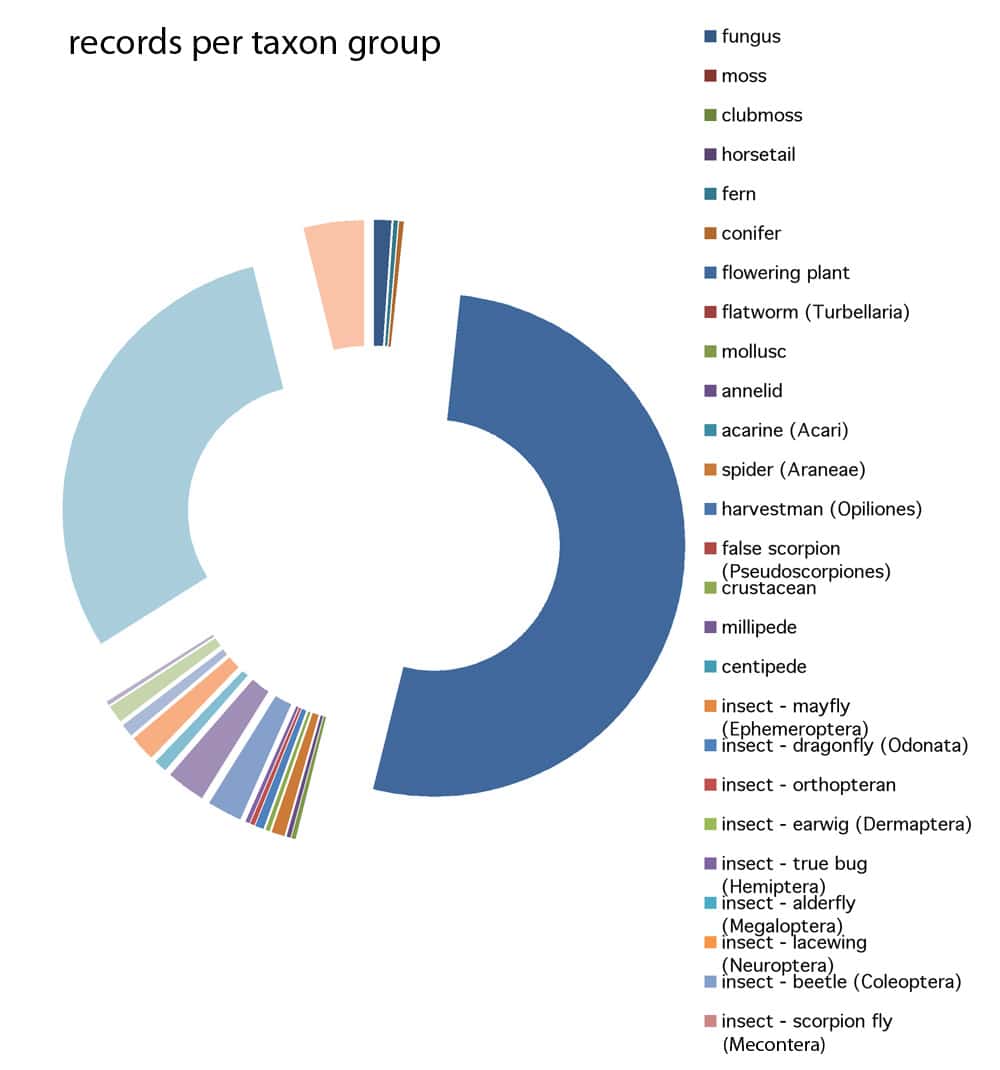Matt Davies, GiGL Data Manager

In the winter 2009 issue of the GiGLer, I shared some novel visualisations of the GiGL database designed to help us all better understand the data we hold, whether they accurately reflect what’s on the ground, and where geographic or taxonomic gaps exist.
We’ve been very pleased with the response to this approach. It really seems to have helped us communicate effectively with data contributors and users and engage them with our current data audit.
In this article I want to look at how we can take this work forward – how we can engender a true sense of partnership working to plug the gaps, by mobilising existing data and reports, engaging with voluntary groups, the general public or commissioning new surveys.
For me, a particular revelation from the audit was the relatively low proportion of species records that come from boroughs and national agencies (about 10% apiece). These figures disguise the fact that some boroughs and national agencies are much more pro-active than others at mobilising data. However, they do also raise the issue that users of the data have a responsibility to contribute what they can. Without new data it will be virtually impossible to detect change in relation to COI8, NI197, BAP audits, and other initiatives that involve monitoring species change.
In the last year, GiGL has done some 300 hours (eight and a half weeks) of work free of charge for volunteer organisations, much of which was spent mobilising data – getting existing paper and electronic records into a useable format. The data that result from this work will be made available to the whole GiGL partnership, who need access to high quality biodiversity information to inform their work.
No doubt there are already good initiatives in place amongst GiGL’s partners to digitise survey reports currently gathering dust in a cupboard. I would like to highlight a couple of recent projects that have helped partners to mobilise existing data, to capture new survey data and ad-hoc records in a format that makes it easy to contribute to GiGL and to identify those data that boroughs assume has been sent to GiGL, but hasn’t.
Shortly after we published the GiGLer data audit article, GiGL were approached by London Borough of Redbridge, who wanted to know which surveys had been submitted to GiGL, which surveyors were sending data to GiGL, and which sites were well recorded. This fitted nicely with our need to localise the species data audit to borough level.

Doughnut diagram records per taxon group
We produced a report, with a liberal scattering of graphical data representations, and invited comments. It was, as Redbridge’s Francis Castro noted, ‘good fun going through the old records to see what we have and who has been entering data’ but, of course, with the positive feedback, came a few constructive pointers to make the report more user friendly.
From now on, in the first data exchange of the year, all boroughs will receive a report of the surveys, reports and species data known to or held by GiGL, broken down by data provider and site. This will, we hope, help boroughs to keep track of exactly what has been sent to GiGL and what has not. In turn, we hope this will strengthen relationships with local groups and increase effort to mobilise existing records.
In addition to the tools that GiGL have already developed to help mobilise data, (see inset) we will, in light of our work with Redbridge, be implementing some new systems to make it easier to track when a report arrives and when it’s added to the database. This should help increase transparency and mean that it’s easy to find out what has already been submitted.
We have also been working with Natural England’s London team to mobilise the wealth of surveys they hold, most of which relate to SSSIs.This began a couple of years ago when two volunteers entered all report titles, authors, site names and other basic summary information into GiGL’s metadatabase. This has enabled Natural England staff to identify which surveys should be prioritised . Staff have now begun the process of entering the species records into a copy of the GiGL standard data entry spreadsheet, which will make the process of uploading to our Recorder database much faster and easier.
Alongside digitising of existing survey information, Natural England will put in place a system to capture species records from ongoing SSSI monitoring work, by allocating staff to input information to the GiGL standard data entry spreadsheet.
If this article or the species audit that will accompany your data exchange makes you want to review how you mobilise species records in existing reports, or how you capture new species records, please get in touch with Matt Davies, Data Manager matt.davies@gigl.org.uk
Raise the standard!
The standard data entry spreadsheet can be downloaded from the GiGL website. Species records from survey reports, new surveys or ad hoc sightings can be entered into it (a new record on each row) and the spreadsheet can then simply be emailed to GiGL. The format is very simple to use and information received in this format can be uploaded, with minimal user supervision, to the Recorder database.
The metadatabase is essentially a catalogue of surveys known to GiGL, from which species information can be extracted. It gives summary information of each survey, such as title, date, author, site and type of species surveyed. The species information from some of the surveys have already been entered onto GiGL’s Recorder database, others are in-process. A copy can be requested from GiGL, and soon will be available on-line.
